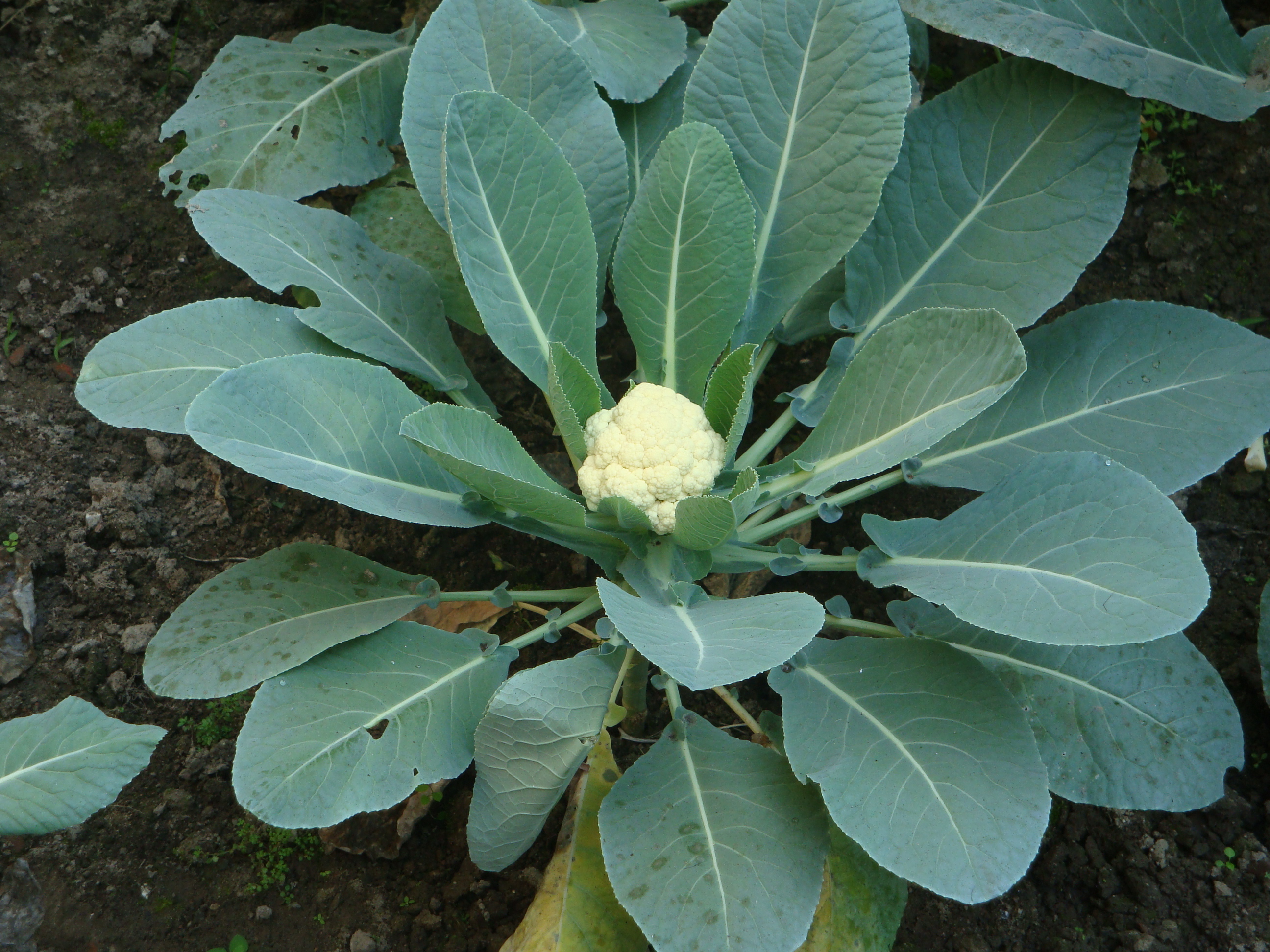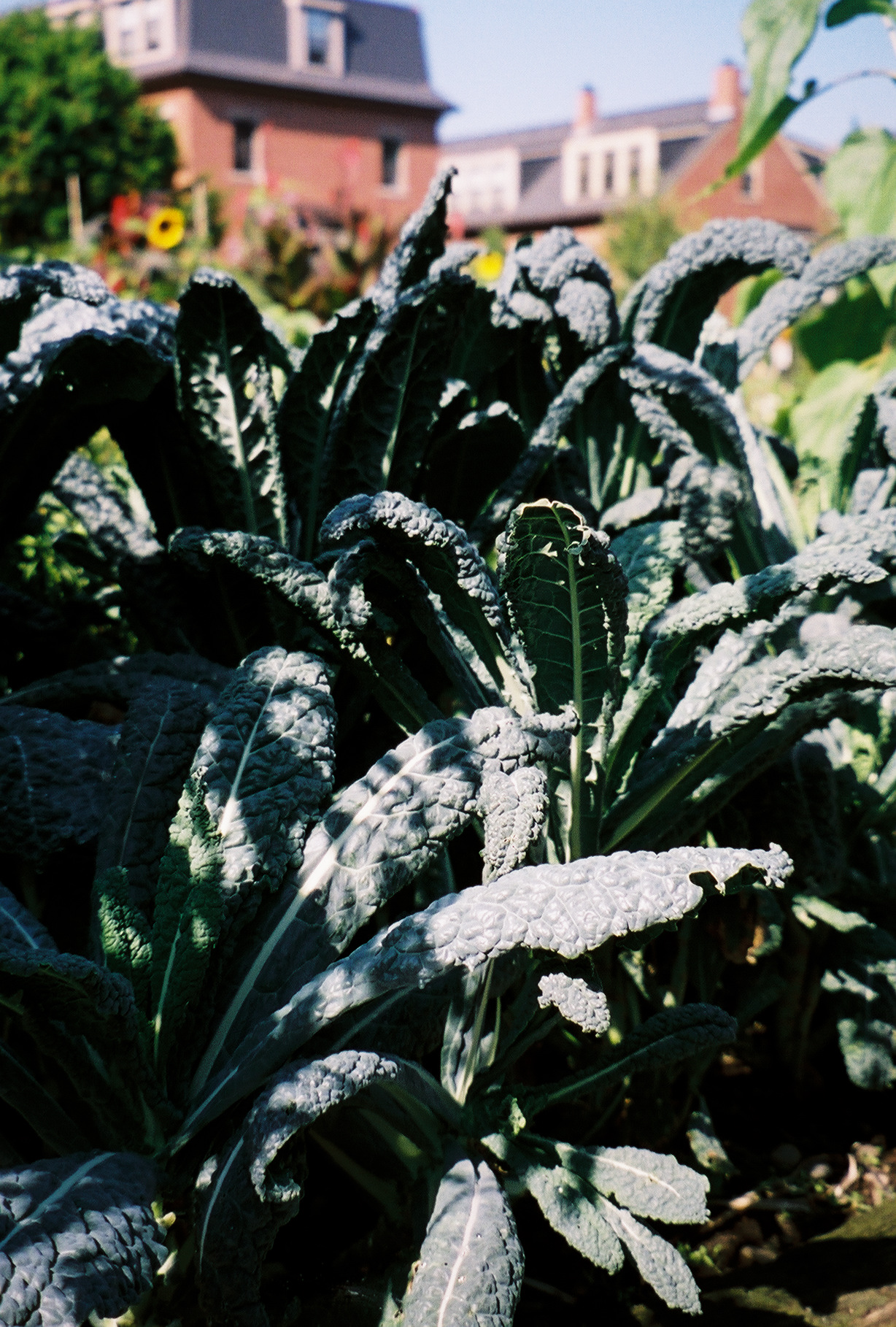|
Kale
Kale (), or leaf cabbage, belongs to a group of cabbage (''Brassica oleracea'') cultivars grown for their edible leaves, although some are used as ornamentals. Kale plants have green or purple leaves, and the central leaves do not form a head (as with headed cabbage). Kales are considered to be closer to wild cabbage than most of the many domesticated forms of ''Brassica oleracea''. Etymology ''Kale'' originates from Northern Middle English ''cale'' (compare Scots ''kail'' and German ''Kohl'') for various cabbages. The ultimate origin is Latin ''caulis'' 'cabbage'. History Kale originated in the eastern Mediterranean and Anatolia, where it was cultivated for food beginning by 2000 BCE at the latest. Curly-leaved varieties of cabbage already existed along with flat-leaved varieties in Greece in the 4th century BC. These forms, which were referred to by the Romans as Sabellian kale, are considered to be the ancestors of modern kales. The earliest record of cabbages i ... [...More Info...] [...Related Items...] OR: [Wikipedia] [Google] [Baidu] |
Brassica Oleracea
''Brassica oleracea'' is a plant species from family Brassicaceae that includes many common cultivars used as vegetables, such as cabbage, broccoli, cauliflower, kale, Brussels sprouts, collard greens, Savoy cabbage, kohlrabi, and gai lan. Its uncultivated form, wild cabbage, native to coastal southern and western Europe, is a hardy plant with high tolerance for salt and lime. However, its intolerance of competition from other plants typically restrict its natural occurrence to limestone sea cliffs, like the chalk cliffs on both sides of the English Channel. Wild ''B. oleracea'' is a tall biennial plant that forms a stout rosette of large leaves in the first year. The leaves are fleshier and thicker than other ''Brassica'' species—an adaptation that helps it store water and nutrients in its difficult growing environment. In its second year, it uses the stored nutrients to produce a flower spike tall with numerous yellow flowers. A 2021 study suggested that the Easter ... [...More Info...] [...Related Items...] OR: [Wikipedia] [Google] [Baidu] |
Lacinato Kale
Lacinato kale (, ) or, in Italian and often in English, (, ; literally "black cabbage") is a variety of kale with a long tradition in Italian cuisine, especially that of Tuscany. It is also known as Tuscan kale, Italian kale, dinosaur kale, kale, flat back kale, palm tree kale, or black Tuscan palm. Lacinato kale has been grown in Tuscany for centuries, and is one of the traditional ingredients of minestrone and ribollita. Description Lacinato kale grows tall and has dark blue-green leaves with an "embossed texture"; its taste is described as "slightly sweeter and more delicate" than curly kale and "slightly bitter ndearthy". The lacinato variety is sometimes called ''dinosaur kale'' because its bumpy leaves may resemble what dinosaur skin looked like, and perhaps because the unique appearance of the leaves is evocative of primordial flora. Because of its taste, it has been called "the darling of the culinary world". Preparation and dishes Lacinato kale, like most other ka ... [...More Info...] [...Related Items...] OR: [Wikipedia] [Google] [Baidu] |
Jersey Kale
The Jersey cabbage (''Brassica oleracea longata'') is a variety of cabbage native to the Channel Islands that grows to a great height and was formerly commonly used there as livestock fodder and for making walking sticks. It is also known as Jersey kale or cow cabbage, and by a variety of local names including giant cabbage, long jacks, tree cabbage and the French ''chour'' and ''chou à vacque''. The 'Jersey cabbage' develops a long stalk, commonly reaching in height, and can grow as tall as . Historically the stalks were made into walking sticks, of which 30,000 a year were being sold by the early 20th century, many for export.; republishePlant Portraits Royal Botanic Gardens, Kew (pdf) They were also used for fencing and as rafters. Much of the stalk is bare; the islanders stripped leaves to accentuate this effect and induce it to grow without twisting, varnished the stalk, and created a handle either by heat-treating and bending the root end or by planting at an angle to pr ... [...More Info...] [...Related Items...] OR: [Wikipedia] [Google] [Baidu] |
Hungry Gap
In cultivation of vegetables in a temperate oceanic climate, the hungry gap is the period in spring when there is little or no fresh produce available from a vegetable garden or allotment. It usually starts when overwintered brassica vegetables such as brussels sprouts and winter cauliflowers and January King cabbages "bolt" (i.e. run up to flower) as the days get warmer and longer, but sooner if a very hard frost kills these crops; and ends when the new season's first broad beans are ready. Means to bridge the gapGardeners World https://www.gardenersworld.com/how-to/grow-plants/guide-to-growing-winter-veg/ or part of it include: *Using stored food: but stored potatoes sprout if kept too long in warm weather, and salted-away meat is used up or goes bad in store. See the origin of lent. *Autumn-sown broad beans: this is risky as seeds could be killed in the ground if it freezes. *Heated greenhouse, or hotbeds, to start summer vegetable seedlings sooner. Other meanings One variety ... [...More Info...] [...Related Items...] OR: [Wikipedia] [Google] [Baidu] |
Headed Cabbage
Cabbage, comprising several cultivars of '' Brassica oleracea'', is a leafy green, red (purple), or white (pale green) biennial plant grown as an annual vegetable crop for its dense-leaved heads. It is descended from the wild cabbage ( ''B. oleracea'' var. ''oleracea''), and belongs to the "cole crops" or brassicas, meaning it is closely related to broccoli and cauliflower (var. ''botrytis''); Brussels sprouts (var. ''gemmifera''); and Savoy cabbage (var. ''sabauda''). A cabbage generally weighs between . Smooth-leafed, firm-headed green cabbages are the most common, with smooth-leafed purple cabbages and crinkle-leafed savoy cabbages of both colours being rarer. Under conditions of long sunny days, such as those found at high northern latitudes in summer, cabbages can grow quite large. , the heaviest cabbage was . Cabbage heads are generally picked during the first year of the plant's life cycle, but plants intended for seed are allowed to grow a second year and mus ... [...More Info...] [...Related Items...] OR: [Wikipedia] [Google] [Baidu] |
Cabbage
Cabbage, comprising several cultivars of '' Brassica oleracea'', is a leafy green, red (purple), or white (pale green) biennial plant A biennial plant is a flowering plant that, generally in a temperate climate, takes two years to complete its biological life cycle. Life cycle In its first year, the biennal plant undergoes primary growth, during which its vegetative structures ... grown as an annual vegetable crop for its dense-leaved heads. It is descended from the wild cabbage ( ''B. oleracea'' var. ''oleracea''), and belongs to the " cole crops" or brassicas, meaning it is closely related to broccoli and cauliflower (var. ''botrytis''); Brussels sprouts (var. ''gemmifera''); and Savoy cabbage (var. ''sabauda''). A cabbage generally weighs between . Smooth-leafed, firm-headed green cabbages are the most common, with smooth-leafed purple cabbages and crinkle-leafed savoy cabbages of both colours being rarer. Under conditions of long sunny days, such as those found a ... [...More Info...] [...Related Items...] OR: [Wikipedia] [Google] [Baidu] |
Rationing In The United Kingdom
Rationing was introduced temporarily by the British government several times during the 20th century, during and immediately after a war. At the start of the Second World War in 1939, the United Kingdom was importing 20 million long tons of food per year, including about 70% of its cheese and sugar, almost 80% of fruit and about 70% of cereals and fats. The UK also imported more than half of its meat and relied on imported feed to support its domestic meat production. The civilian population of the country was about 50 million. It was one of the principal strategies of the Germans in the Battle of the Atlantic to attack shipping bound for Britain, restricting British industry and potentially starving the nation into submission. To deal with sometimes extreme shortages, the Ministry of Food instituted a system of rationing. To buy most rationed items, each person had to register at chosen shops and was provided with a ration book containing coupons. The shopkeeper was prov ... [...More Info...] [...Related Items...] OR: [Wikipedia] [Google] [Baidu] |
Croatia
, image_flag = Flag of Croatia.svg , image_coat = Coat of arms of Croatia.svg , anthem = "Lijepa naša domovino"("Our Beautiful Homeland") , image_map = , map_caption = , capital = Zagreb , coordinates = , largest_city = capital , official_languages = Croatian language, Croatian , languages_type = Writing system , languages = Latin alphabet, Latin , ethnic_groups = , ethnic_groups_year = 2021 , religion = , religion_year = 2021 , demonym = , government_type = Unitary parliamentary republic , leader_title1 = President of Croatia, President , leader_name1 = Zoran Milanović , leader_title2 = Prime Minister of Croatia, Prime Minister , leader_name2 = Andrej Plenković , leader_title3 = Speaker of the Croatian Parliament, Speaker of P ... [...More Info...] [...Related Items...] OR: [Wikipedia] [Google] [Baidu] |
World War II
World War II or the Second World War, often abbreviated as WWII or WW2, was a world war that lasted from 1939 to 1945. It involved the World War II by country, vast majority of the world's countries—including all of the great powers—forming two opposing military alliances: the Allies of World War II, Allies and the Axis powers. World War II was a total war that directly involved more than 100 million Military personnel, personnel from more than 30 countries. The major participants in the war threw their entire economic, industrial, and scientific capabilities behind the war effort, blurring the distinction between civilian and military resources. Air warfare of World War II, Aircraft played a major role in the conflict, enabling the strategic bombing of population centres and deploying the Atomic bombings of Hiroshima and Nagasaki, only two nuclear weapons ever used in war. World War II was by far the List of wars by death toll, deadliest conflict in hu ... [...More Info...] [...Related Items...] OR: [Wikipedia] [Google] [Baidu] |
Victory Garden
Victory gardens, also called war gardens or food gardens for defense, were vegetable, fruit, and herb gardens planted at private residences and public parks in the United States, United Kingdom, Canada, Australia and Germany during World War I and World War II. In wartime, governments encouraged people to plant victory gardens not only to supplement their rations but also to boost morale. They were used along with rationing stamps and cards to reduce pressure on the food supply. Besides indirectly aiding the war effort, these gardens were also considered a civil "morale booster" in that gardeners could feel empowered by their contribution of labor and rewarded by the produce grown. This made victory gardens a part of daily life on the home front. World War I Canada Victory Gardens became popular in Canada in 1917. Under the Ministry of Agriculture's campaign, "A Vegetable Garden for Every Home", residents of cities, towns and villages utilized backyard spaces to plant vege ... [...More Info...] [...Related Items...] OR: [Wikipedia] [Google] [Baidu] |
Hardiness (plants)
Hardiness of plants describes their ability to survive adverse growing conditions. It is usually limited to discussions of climatic adversity. Thus a plant's ability to tolerate cold, heat, drought, flooding, or wind are typically considered measurements of hardiness. Hardiness of plants is defined by their native extent's geographic location: longitude, latitude and elevation. These attributes are often simplified to a hardiness zone. In temperate latitudes, the term most often describes resistance to cold, or "cold-hardiness", and is generally measured by the lowest temperature a plant can withstand. Hardiness of a plant is usually divided into two categories: tender, and hardy. (Some sources also use the erroneous terms "Half-hardy" or "Fully hardy".) Tender plants are those killed by freezing temperatures, while hardy plants survive freezing—at least down to certain temperatures, depending on the plant. "Half-hardy" is a term used sometimes in horticulture to describe ... [...More Info...] [...Related Items...] OR: [Wikipedia] [Google] [Baidu] |








.jpg)